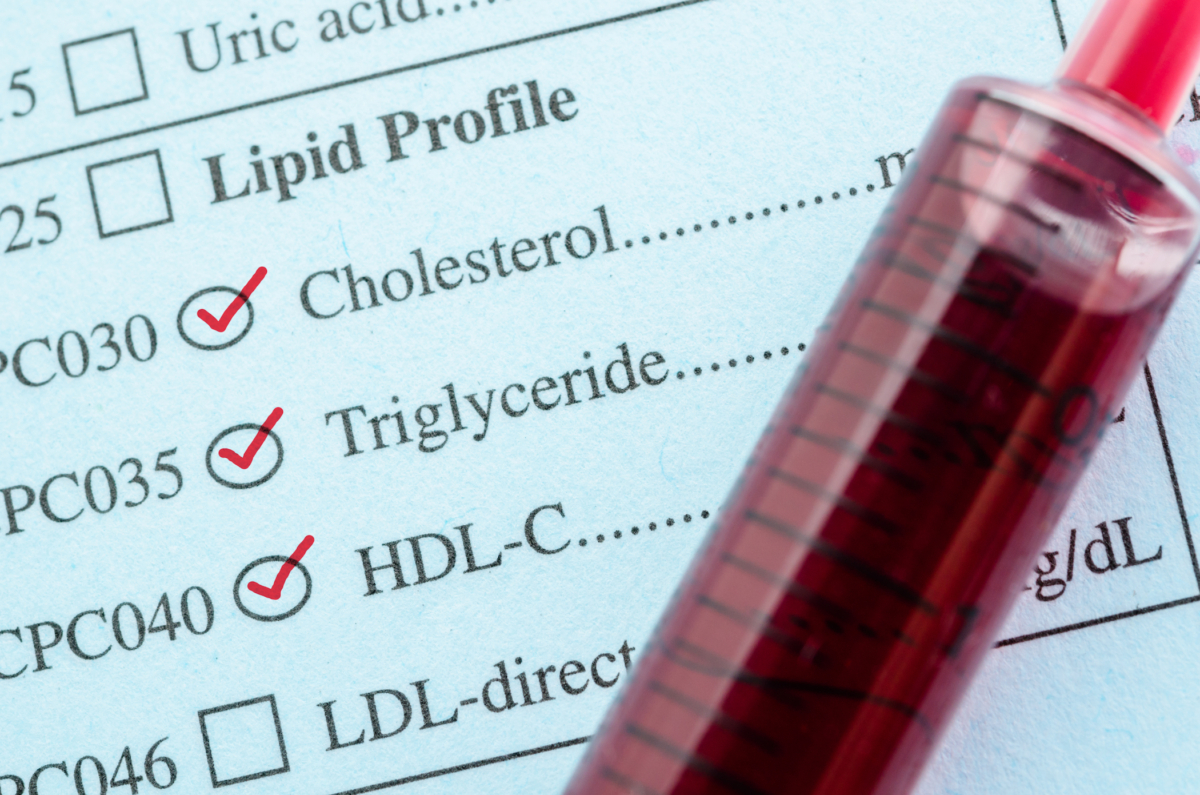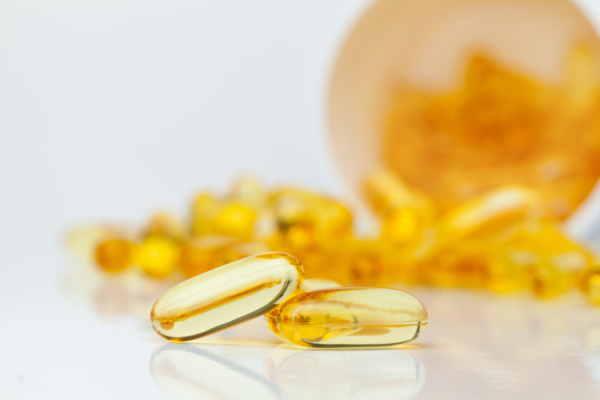 |
| (PENpics Studio/Shutterstock) |
Health Viewpoints
The four values on a standard cholesterol panel are mostly garbage. Total cholesterol is worthless. LDL cholesterol is not a real number, but a fictitious value with little relationship to reality and, at best, poor predictive value for cardiovascular events. Because reducing LDL cholesterol has become such a profitable enterprise for the pharmaceutical industry, this is the value that the majority of physicians focus on, bullying their patients into taking statin cholesterol drugs, even though their track record is, at best, spotty, providing little if any benefit to the majority while increasing risk for Type 2 diabetes, progressive muscular weakness, and cognitive impairment.
Triglycerides, however, are an exception: a marker that provides numerous insights into metabolic and cardiovascular health. For many years, I consulted on cases of complex hyperlipidemias, i.e., unusual disorders of cholesterol, triglycerides, and lipoproteins. For many years, I prescribed statins, fibrates, niacin, and other agents to gain control over “high cholesterol,” high triglycerides, low HDL, etc. But, over time, it became clear to me that not only are cholesterol values virtually useless, triglycerides are important and could be managed entirely with dietary maneuvers, never requiring pharmaceuticals. Ideal triglyceride levels of 60 mg/dl or less are readily achievable without drugs.
The pharmaceutical industry may be cutthroat, exploitative, and a cancer on society, but they’re not stupid. They have tried to commercialize drugs to reduce triglycerides with agents that include statin drugs, fibrates (e.g., gemfibrozil, fenofibrate), and the absurd world of prescription fish oil (Lovaza, Vascepa), even though blood triglyceride levels are completely under the influence of diet, insulin resistance, and other nutritional factors.
But did you know that you can reduce blood levels of triglycerides naturally, dropping, for instance, a level of 500 mg/dl to 45 mg/dl? The ideal level of triglycerides of 60 mg/dl or less tells you that:
- VLDL particles are minimized: Very low-density lipoproteins are triglyceride-rich particles that flood the bloodstream after the consumption of carbohydrates or sugars. Amylopectin, a carbohydrate of wheat and grains, is a major trigger for VLDL particle formation in the liver via the process called de novo lipogenesis, the conversion of carbs to triglycerides or fats. VLDL particles are both a direct cause of coronary atherosclerosis, as well as a contributor of triglycerides to LDL particles that, via a series of reactions, lead to the formation of small LDL particles, a major contributor (not LDL cholesterol) to coronary disease. Triglyceride blood levels track perfectly with VLDL blood levels. It means that, even if you do not have an advanced (e.g., NMR) lipoprotein panel, you can use a standard cholesterol panel that includes triglycerides to track VLDL particles. (This is unlike LDL cholesterol which tracks poorly with the real value, LDL particle number.)
- Insulin resistance is minimized: Insulin resistance amplifies liver de novo lipogenesis. If insulin resistance is minimized to healthy levels, liver de novo lipogenesis that produces triglycerides (as VLDL) is also minimized. Low triglycerides are therefore accompanied by ideal blood sugars, ideal HbA1c, ideal fasting insulin levels, and minimized endogenous glycation (glucose-modification of proteins that accelerate aging). While not a direct measure of insulin resistance, having a triglyceride level of 60 mg/dl or less is indirect evidence of minimized insulin resistance.
- Small LDL particles are minimized: Because small LDL particles are formed with the participation of VLDL particles, minimizing triglycerides/VLDL particles means that small LDL particles are no longer being created. Recall that small LDL particles, due to a change in surface conformation of the apoprotein B (apo B) recognition protein, are not effectively cleared by the liver and thereby persist for five to seven days after consuming, say, a sandwich or stack of pancakes. Normal large LDL particles formed after, say, some bacon or eggs, are cleared within 24 hours since the normal apo B configuration means the liver recognizes these particles and clears them from the bloodstream. Having fasting triglyceride levels of 60 mg/dl or less, therefore, tells you that small LDL particles are minimized or eradicated.
 |
| (Kraevski Vitaly/Shutterstock) |
How to Reduce Triglyceride Blood Levels to the Ideal 60 Mg/dl or Less?
- Don’t eat wheat or other grains: This avoids fueling liver de novo lipogenesis that creates triglycerides. (Even though dietary fats and oils are triglycerides, they are minor contributors to blood levels of triglycerides. Liver de novo lipogenesis from carbs is the dominant factor.)
- Manage carbohydrates: I advocate consuming no more than 15 grams of net carbs per meal. We are not aiming for ketosis; we are aiming to minimize rises in blood sugar, formation of VLDL and small LDL particles, and minimize insulin resistance.
- Supplement omega-3 fatty acids, EPA and DHA, from fish oil only—never krill, flaxseed, or chia: Flaxseed and chia are excellent sources of the omega-3 fatty acid, linolenic acid, but not EPA or DHA. The dose is 3,600 milligrams EPA + DHA (total) per day, divided into two doses.
- Supplement other nutrients lacking in modern life that also contribute to minimizing insulin resistance: These include vitamin D, magnesium, and iodine.
- Manage bowel flora: Feeding and cultivating bowel flora with prebiotic fibers/resistant starches drops triglycerides even further. Addressing SIBO can reduce triglycerides substantially. Recall that endotoxemia that develops with colonic dysbiosis/small intestinal bacterial overgrowth leads to endotoxemia that, in turn, drives insulin resistance that amplifies liver de novo lipogenesis, yielding triglycerides. Our efforts, such as SIBO Yogurt, to reorganize bowel flora reduce gram-negative fecal species, reduce endotoxemia, and thereby reduce insulin resistance and triglyceride levels.
In other words, we obtain ideal triglyceride levels of 60 mg/dl by addressing the factors that increase triglycerides. That is how you reduce the risk for cardiovascular events and other metabolic conditions.
Originally published on DrDavisInfiniteHealth.com
Important Notice: This article was also published at www.theepochtimes.com by Dr. William Davis where all credits are due.
Disclaimer
The watching, interacting, and participation of any kind with anything on this page does not constitute or initiate a doctor-patient relationship with Veripeudic.com. None of the statements here have been evaluated by the Food and Drug Administration (FDA). The products of Veripeudic.com are not intended to diagnose, treat, cure, or prevent any disease. The information being provided should only be considered for education and entertainment purposes only. If you feel that anything you see or hear may be of value to you on this page or on any other medium of any kind associated with, showing, or quoting anything relating to Veripeudic.com in any way at any time, you are encouraged to and agree to consult with a licensed healthcare professional in your area to discuss it. If you feel that you’re having a healthcare emergency, seek medical attention immediately. The views expressed here are simply either the views and opinions of Veripeudic.com or others appearing and are protected under the first amendment.
Veripeudic.com promotes evidence-based natural approaches to health, which means integrating her individual scientific and clinical expertise with the best available external clinical evidence from systematic research. By individual clinical expertise, I refer to the proficiency and judgment that individual clinicians acquire through clinical experience and clinical practice.
Veripeudic.com does not make any representation or warranties with respect to the accuracy, applicability, fitness, or completeness of any multimedia content provided. Veripeudic.com does not warrant the performance, effectiveness, or applicability of any sites listed, linked, or referenced to, in, or by any multimedia content.
To be clear, the multimedia content is not intended to be a substitute for professional medical advice, diagnosis, or treatment. Always seek the advice of your physician or other qualified health providers with any questions you may have regarding a medical condition. Never disregard professional medical advice or delay in seeking it because of something you have read or seen in any website, video, image, or media of any kind. Veripeudic.com hereby disclaims any and all liability to any party for any direct, indirect, implied, punitive, special, incidental, or other consequential damages arising directly or indirectly from any use of the content, which is provided as is, and without warranties.

